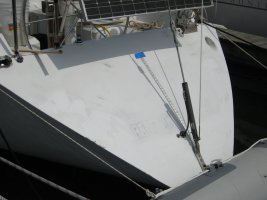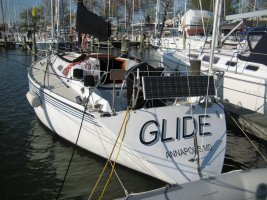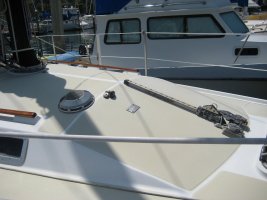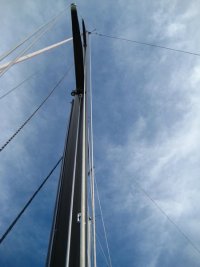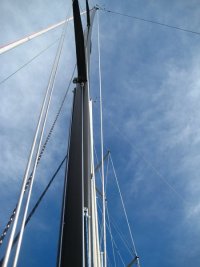Mast set up
The setings for the mast step and partners have zero impact on "tracking" or how the boat steers. The purpose of this setup (which I agree with for the RH 36 based on mast characteristics) is to induce some prebend, and as result the mast will take on a more uniform bend profile as you add backstay tension. This is desireable becuase as you bend the mast (which does depower the boat by flattening the mainsail) you want the sail to change shape over the entire luff length, and to do so in a uniform manner.
What DOES affect steering qualities is the amount of mast rake-the more aft rake you have, the greater the tendency to have weather helm. You need a little aft rake, or the boat won't want to point as well as it was designed to. Too little rake and the boat will not point as well, but will have less weather helm which will improve downwind and reaching performance at the expense of upwind performance, and vice versa.
"Tracking" is not affected by rake or prebend-this has more to do with the location of the keel in the fore and aft plane, and also rudder shape, size and location-all of which are correct on this design.
For example, if you set up the rig so that there were no prebend, the mast would bend much more at the top than at the bottom, with the result that only the top portion of the sail would flatten as you add backstay tension, while the lower portion would change much less. This will result in a sail which is flatter at the top than the bottom and this is not the objective.
The mast has a total bend potential of about 10" when using a bckstay adjuster. The sail should be designed so that it is relatively full with no backstay load, and become very flat at about 80-90% of the available bend. This way you have a full range of adjustment to match the conditions.
If you do not use an adjuster, then the mast will not be able to be controlled in terms of bend, and the sailmaker MUST take this into account and begin with a flatter sail shape (since it cannot be adjusted except for outhaul, cunningham and vang). You would still want some prebend (but the sailmaker must know how much prebend has been induced) so that you get at least SOME uniform bend as you add vang tension. Prebend also helps prevent the mast from inverting (bending forward) in heavy seas.
Sail design must take into account the bend characteristics of the mast, and the available adjustment.
Hope this helps answer you question.
S

